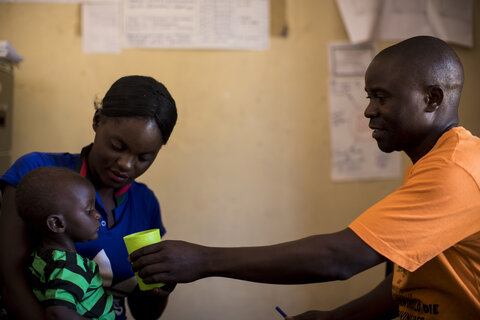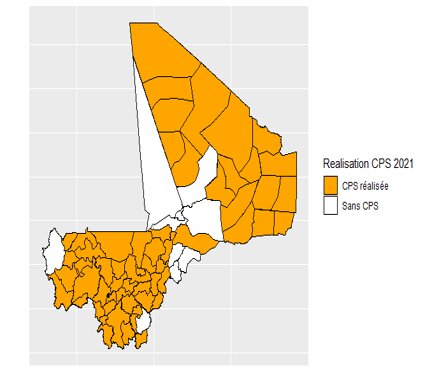Background

Mali is one of the 11 countries with a high burden of malaria and has subscribed to the initiative “From a high burden to a strong impact” (High Burden High Impact- HBHI) whose launch took place in Bamako on March 30, 2021 under the presidency of the Minister of Health and Social Development. Indeed, malaria is the leading cause of morbidity (43%) and mortality (27%) in 2022 (DHIS2). Children under 5 years old and pregnant women are the most affected. The results of the Mali Demographic and Health Survey (EDSMVI, 2018) showed that 16% of children aged 6-59 months and 63% of women presented anemia. The incidence rate increased from 133‰ in 2018 to 172‰ in 2022 (DHIS2). For children under 5 years old, it increased from 224‰ to 250‰ during the same period.
Areas eligible for SMC and areas where SMC is implemented in 2020

|
Mali 2021 SMC season |
# of children targeted |
# of children reached |
Coverage |
|
Cycle 1 |
3,979,636 |
3,306,948 |
83% |
|
Cycle 2 |
3,974,086 |
3,270,392 |
82% |
|
Cycle 3 |
3,979,636 |
3,273,498 |
82% |
|
Cycle 4 |
3560760 |
3055937 |
86% |
|
Cycle 5 |
73803 |
no information |
- |
|
Children receiving at least 4 cycles |
3418204 |
2700765 |
79% |
Monitoring for coverage and compliance in the 2021 SMC season
How do you monitor coverage completeness and treatment adherence?
- Daily collection and reporting of SMC data
- Supervision and monitoring of SMC data management at different levels
- Independent monitoring surveys after the 1st and 4th visit
How do you rate the effectiveness?
- Through routine service statistics data, evaluation surveys conducted by Malaria Research and Training Center on the quality and effectiveness of the SMC (Sample Districts) and IEP and Demographic and Health Survey (DHS) surveys
Successes, opportunities, challenges and proposed solutions in the 2021 SMC season
Successes
- Commitment and involvement of administrative authorities at all levels
- Availability of drugs in sufficient quantity Involvement of opinion leaders and community leaders
- Support for technical and financial partners.
- Mobilization of TFP resources on time
- Timely implementation of SMC drugs at all levels
Actions put in place to achieve success
Strong financial and material contribution from some community leaders
Enthusiasm and strong support of the population for the SMC
Conducting SMC Quality Assessment Surveys
Integration of other community activities (immunization, malnutrition screening) into SMC
Adaptation of the SMC to the COVID-19 context
Provision of SMC agents with PPE
Challenges
- Disparity in SMC fund management procedures
- Inadequate training of actors
- Inadequate filling of SMC materials by distribution agents
- Inadequate local supervision
- Non-compliance with the administration of the 2nd and 3rd doses of AQ at home by some parents
- The underestimation of the SMC target due to the obsolete database
- Under-reporting of ADRs from SMC
- Constraining COVID-19 barrier measures for the administration of SPAQ to children
Actions to be adopted to address challenges
- Harmonization of management procedures for all SMC funds
- Develop concise modules based on practical simulations for better training of community actors
- Regularly monitor and evaluate supervisors through the supervision grids put in place
- Use of population data from previous campaigns to estimate the target
- Continuous training of all actors on pharmacovigilance
Research priorities for 2020
- Optimization study of the SMC implementation strategy: since the project from April 2022
- Rapid assessment study of the impact of SMC in 2022
- Evaluation study of the SMC process in 2022
Partners
University of Thiès, MMV, The Global Fund, EDCTP